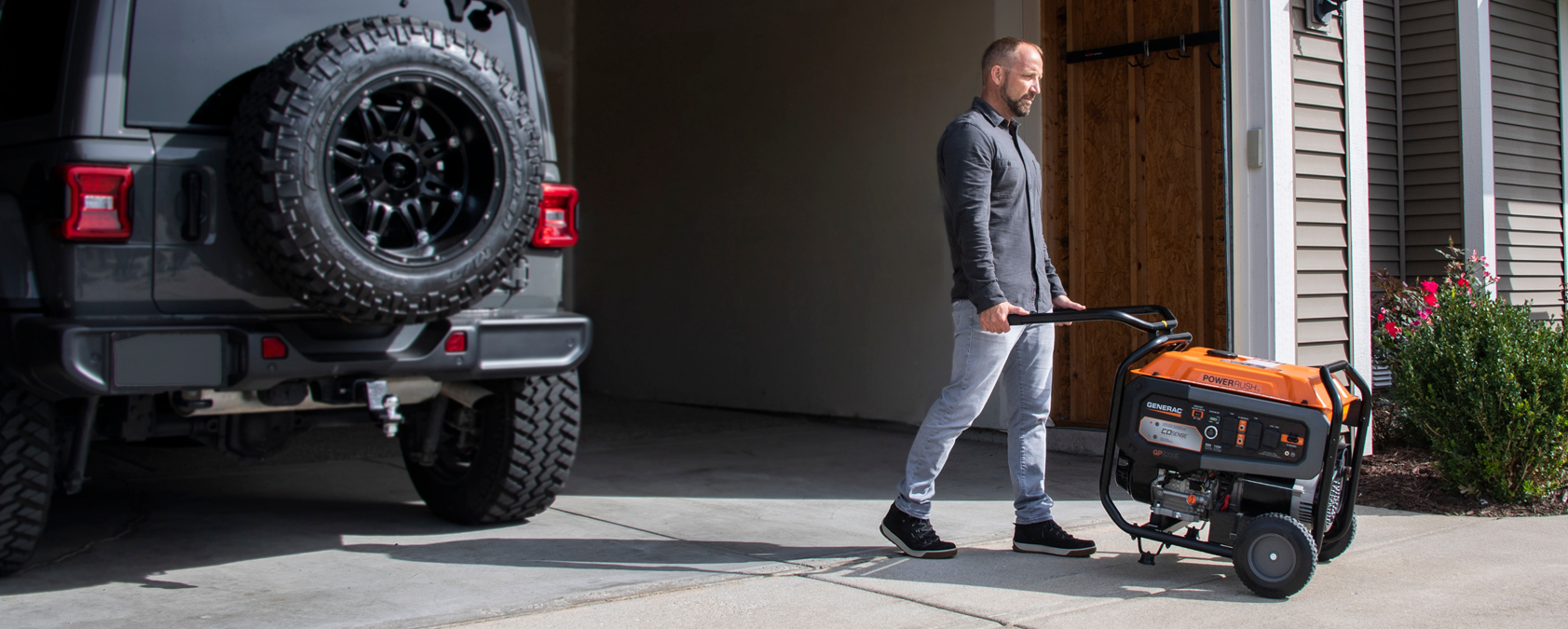Portable Generators
Maintenance and Use
All generators need maintenance from time to time—such as oil and filter changes—to keep them performing at their best for years of reliable service. Refer to the owner's manual for routine maintenance procedures and schedules.
Assembling your portable generator is easy, but it’s important to do it correctly. You’ll need to install the handle, feet, wheels and battery. This video will show you what tools you need and how to precisely put every part together.
- It depends on the application. When using extension cords alone, you do not need to use a ground rod. (This applies to bonded neutral portable generators. Details can be found in the owner's manual.)
- When connecting to an electrical panel (such as a building electrical system, manual transfer switch, RV, etc.) you do need to connect your generator to a ground rod.
- Ground rods must be pounded into the earth, then connected to the ground lug on the generator via a ground cable. The rod must be at least 8 feet into the earth.
- We strongly recommend that you check and adhere to all applicable federal, state and local regulations relating to grounding.
- No. Never run the generator indoors, in a garage or in an enclosed area. Portable generators are designed to run outside where there is plenty of ventilation. You need to position your portable away from doors and windows so that the exhaust fumes do not get inside the house. The produced carbon monoxide gas can cause serious poisoning.
- Be sure to set your portable where it will be protected from moisture, rain and snow.
Never run a generator directly in the rain, snow or other wet conditions. Never run a generator indoors or in a garage.
- We highly recommended that you drain the fuel from the tank and run the carburetor dry if you are planning on storing your portable for more than 30 days.
- Fuel begins to deteriorate within approximately one month. To preserve its properties, you should add a stabilizer right from the start. The stabilizer will neutralize the damaging effect that ethanol has on the components responsible for combustion. Be sure to carefully follow the fuel stabilizer's ratio instructions, noting the duration that the fuel stabilizer is effective for.
- Use clean, fresh unleaded gasoline with a minimum 87 octane rating.
- What kind of oil do you recommend? How often should I change it?
- Above 32°F, use SAE 30. Below 40°F and down to -10°F, use 10W-30. Synthetic 5W-30 can be used in all temperatures.
- Oil should be changed after the first 20-30 hours of operation and every 100 hours of run time thereafter.
- Above 32°F, use SAE 30. Below 40°F and down to -10°F, use 10W-30. Synthetic 5W-30 can be used in all temperatures.
- Oil should be changed after the first 20-30 hours of operation and every 100 hours of run time thereafter.
- You can properly charge your portable generator with four easy but important steps:
- Connect the battery to the unit
- Plug the charger into the wall
- Plug the other end of the charger into the unit
- Check that you have utility power
- Never overcharge your battery.
- Follow along with each step and get charging tips in this video.
- We’re proud to say that we (Generac Power Systems Inc.) design and manufacture Generac G-FORCE® and OHVI engines right here in the U.S., at our facilities in Wisconsin.
- Generac OHV engines are not engineered or manufactured in the U.S.
- If the gas in your portable generator gets stale, your engine could start running rough or not at all. It’s important to keep the gas supply full and fresh.
- There are several steps for safely and properly draining stale gas before you add new gas:
- Turn the fuel valve off to disconnect the fuel line.
- Drain the gas and clean the carburetor.
We outline these steps and more in this video.

